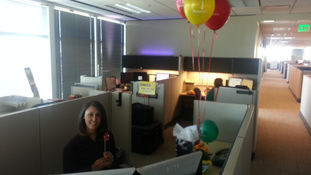
If you’re paying any attention to today’s trends, you’ll know that talk of social influence and branding is everywhere. This is because simply doing quality work and providing value is not enough to be chosen for opportunities. What matters most is the reputation you’ve built for your expertise.
To get the breakthrough opportunities you need in your career will require a new strategy that involves selling yourself as an influential expert. When you become known as an expert and a thought-leader in your industry you will be more likely to get the career and business opportunities you want, have increased job security, and get paid much more than average. So what’s the key to developing your reputation as an expert in your field? Step 1 – Up your presence Those who look the part get the opportunity to audition for the role. People choose to hire those who fulfill their vision for what their expert should look like. If you met a guy in a tuxedo who says he’s a plumber would you believe him right away? Not likely. Your goal is to create the immediate impression to others that you are a competent expert at what you do, so they will be more likely to trust you. Experts are also extremely confident and they are great at connecting with others. By mastering personal body language that sends the signal that you’re competent at what you do and that you absolutely want to help the person you’re trying to work with you’ll be more likely to be chosen for the role. Step 2 – Become an authority Just looking the part is never enough to solidify your expert reputation. It’s important to develop a resume for success that will validate the claim that you’re good at what you do. How do you accomplish this? Check in with people who are already known as credible experts in the field and talk to them about what they’ve done to reach the top. Take note of anything they share that they believe was a true catalyst for propelling them forward and identify the easiest items to start adding to your list to speed up your rise to the top. If you’re new to an industry it’s helpful to find high level leaders with a large following and offer to help them for free. To get the full benefit, you’ll need to be straight-forward with them and ask for a trade up front – free work in exchange for social proof in the form of testimonials and recommendations. Step 3 – Get in front of the right people, a lot Who needs to see you in order for you to get noticed as an expert and obtain the opportunities you want in your life? If you’re in a corporate job and want to get a promotion, you’ll want to find opportunities to showcase your capabilities in front of key decision makers. Make a list of those people and write down ideas for how you can get in front of them on a consistent basis. Visibility creates familiarity and consistency builds trust. You’ll need both in order to succeed. If you’re a business owner you’ll want to consider places where your ideal customers hang out. Are they at hobby clubs? Are they in sports bars? Do they like social media? Find opportunities to get consistent visibility in those places to gain the familiarity you need to build with your potential customers. Most importantly Never go without a written strategic plan. It doesn’t need to be long – a simple one page plan will do. Research shows that those who write their plan down are more likely to achieve their goals, and you want to be one of the ones who succeed! For a more in depth explanation of this topic and lots of workbook pages to build your strategy pick up a copy of The 4 Keys to Influence. And if you’re in the Denver area check out this upcoming live 3 hour weekend strategy session.
0 Comments
 I was probably 19 at the time, it’s been so long I can’t quite remember, but the experience is still fresh in my mind. It was review week and this was the second time I’d seen this on my report “rarely speaks up to take on new assignments.” Was this a running joke, or were people really not seeing me for the powerhouse employee that I was? I put so much energy into doing a great job, went above and beyond in my projects, and took on other people’s projects when they couldn’t complete them. I had to say something this time. They can’t just tarnish my reputation with imperfect remarks without an explanation for how they’re measuring “speaking up,” so I went to the manager. “Can you please take a moment to explain what it means that I don’t speak up to take on new assignments?” “I know you do good work, but some of the other employees speak up more than you asking for new projects and taking on assignments as I bring them up. You don’t do that.” “Yes, I’ve seen them do that, but do you recognize that I have taken on several of their shifts when they overbooked themselves? I only take on work I can handle while they continue to over book and then end up needing me to pick up the slack,” I replied. “Now that you mention it I have noticed that. And were you the one who redesigned our productivity spreadsheet?” the manager asked. “Yes, that was me. I had some downtime during one of my shifts and I saw that it needed to be updated with our new strategy, so I took the time to make the changes. I figured you’d notice when you looked at it in the morning,” I said. “I did, but it could have been from anyone during the day, so I didn’t immediately assume it was you. I was waiting for someone to say something. This is what I’m talking about, how can I know how to rate you if I don’t know what you’re doing? I can’t read your mind,” he replied. This was when I began to realize the pattern I had fallen into. At each job I had been in there were people who stood out and continued to get more opportunities than me even though I knew I had an impeccable work ethic, but work quality alone is not the route to the top of the ranks. To get there, it’s important to stand out and become a well-recognized resource to the company management. The people who succeeded in receiving promotions and opportunities for growth exhibited several behaviors such as: Taking on highly visible assignments - Those who accepted high profile assignments such as those specially requested by higher levels of management received a great deal of praise even if the projects were small in nature. When they did a good job they were praised by leadership, which gave them additional clout. Pointing out their accomplishments - People who earned the most attention from leadership also did quite a bit of bragging in the form of storytelling. They’d share war stories from their latest projects starting with how big the project seemed in the beginning, how they strategized to solve the problem, and how through their wits they were able to conquer and win. They brought other people into the conversation giving them praise for their parts and receiving it back publicly, further advancing their brand. Building rapport with leadership - Employees that spent time building deeper bonds with managers in decision making positions always seemed to get ahead much faster than anyone else. If your work is comparable to another person, what do you think will become the deciding factor in a promotion? This doesn’t mean you have to be inauthentic or kiss anyone’s butt undeservingly, but make it a point to establish a relationship, so when the decision comes to down to who they would prefer working closely with they can picture spending long hours with you. For me, it took several years to really start getting to work on building some of these skills. I recognized what was happening around me, but I still couldn’t quite get the hang of doing it myself. It just didn’t feel natural. If you're anything like me, you want to start implementing these changes successfully right away, but it's important to give yourself time to adjust to trying to incorporate more visible activities into your workplace lifestyle. To get started it helps to start with a clear plan of action that details how you feel about where you are today, where you want to go and what it will look like, and chart the steps you’ll need to take in order to reach your ultimate goals. My workbook “The 4 Keys to Influence” is a great place to start drafting your plan for getting noticed as a workplace leader. It’s only 32 pages, so it’s an easy book to read and offers lots of workbook pages to help you develop your strategy. I encourage you to pick up the paperback version, so you can write your thoughts down on paper and review them later on as you look back at your development years into the future. If you’re on Twitter, let’s connect — @krystalgolead I tell my story of being an introvert a lot because, well honestly it's a major defining characteristic for me. It's also helpful that I explain that to people because I've found that things I do can be misconstrued if I don't explain myself. I've had people call me unfriendly, or believe I don't like them, so explaining my introversion ahead of time allows them to have an understanding of what they can expect from interacting with me before they start making judgements.
I really believe that introversion is still one of the most misunderstood personal characteristics there is. When I tell people I'm an introvert they'll actually say things like "no, don't say things like that about yourself." This leads me to believe they see it as an affliction rather than a personality characteristic. Being introverted means I get tired of interacting with people after a while. It's nothing personal, but I just want some alone time. I don't require much at all to be content, so I view it as a positive. I've met extreme extroverts who say that they feel depressed when they can't be around people for extended periods of time. I'd say that's something I'm glad I don't have to deal with. Introversion is not the same as being quiet or shy, although they are often put in the same bucket.
To learn more about some of the memorable introverts of history pick up the book "Quiet: The Power of Introverts in a Word that Can't Stop Talking." Have you ever looked back at old photographs or scrolled your Facebook newsfeed from 5 years ago to reflect on your changes? I recently went back in time to the days when I was newly becoming the influential person I am now. Because my husband was a YouTube fanatic early on, I have a video from his channel that shows a really good view of my transformation over time. If only there were videos of my teenage years. Yikes! The first video is from 2011 and the other video is from last week. Check out the difference in my presence. It's totally different. Before, I was afraid to look at the camera and had little to say. I also stood clasping my hands as if for protection from the onlooking crowd behind the camera (all 850+ views). Today, I face the camera face-forward for greater connection with the audience. Even though you can't see my hands, you can tell they're free and I have so much expression and enthusiasm in my voice. This is exactly what I envisioned when I started the process of learning the power of charisma. I've reached my goal! Now it's time to teach others. Go team charisma!
 The past few weeks have been heavy networking days for me. I've shaken dozens of hands and looked in twice as many eyes. And of course, I've been reflecting on human connection and the language of the powerful. When was the last time you talked with someone truly powerful? What are some of the characteristics you recall from the interaction? From my observation the higher ranking a person is, the more likely they are to have a tight handshake, stand with a wide stance, and use power eye-contact. Of those characteristics, the eye-contact is the fiercest trait. I can guarantee that the most powerful person in the room will always win in a staring competition. Eye contact is such a vulnerable thing. It's as if through eye contact, others can see within us and find out how powerful (or not) we really are. If you want to run with the power players, it's important to practice the art of eye contact in addition to the traditional handshake grip and standing with power. If you can't look a person in the eye without looking away frequently, you might be overlooked. Happy connecting!  I recently had a conversation with a colleague at work. We talked about a encounter I had where a man who had been clearly watching me on the light rail train home proceeded to follow me on the street during my route home. There was nothing menacing about the man, nor was he speaking to me threateningly or inappropriately. The issue is that he was breaking a clear barrier and I needed to get him to follow my rules. My colleague suggested I share this story to illustrate the downside of attraction and practical ways to combat the issue. When you look approachable, attractive, and interesting people will want to get to know you. In fact, they may go to uncomfortable lengths just to have the opportunity to talk with you. Whether you're being approached by people who want to network with you (but you want to move on) or someone of the opposite sex that you'd rather not connect with, you can control the interaction by following a few simple rules of body language.
For my encounter, I found it difficult to be completely rude to someone who may be my neighbor, so I was cordial as he tried to engage with me, but told him in a straight-forward manner "I'm not interested in having a conversation with you right now." He then said, "I understand, I'll leave you alone." And he crossed a different street. It turned out this person lives a few blocks away from me, so I was right to be somewhat cordial, but staring at me on the light rail and following me home while trying to engage was inappropriate, so I was right to tell him to keep his distance. Things may not always work as simply, but in every unwanted encounter it's important to remember that you have the control and you can command the situation.  We use incentive rewards as a form of persuasion in every facet of our lives, but when we use rewards the wrong way, we can get ourselves in trouble. Find out how rewards really work and become more influential in your daily life. Rewards can make fun activities less enjoyable Have you ever had a hobby, something you would do every day of the week for free? And have you ever been offered a financial incentive to do that hobby for someone else? Chances are you didn’t enjoy the activity as much as you did before being paid for it. Behavioral scientists tried this very scenario with a group of children. Several preschool age children, who regularly spent their time drawing, were offered a reward for doing so. Some children were asked to draw in order to receive an award (similar to receiving payment), while others were given a surprise award after choosing to draw on their own. When the experiment was over, the children who had been ‘paid’ to draw were less likely to choose drawing as their playtime activity in the future. They essentially lost interest after being ‘paid’ to draw. Simple and complex tasks should be rewarded differently What this study and others like it have found is that rewards need to be used in specialized ways depending on the task and the behaviors we want to see in the future. A reward that is conditional narrows our view. This type of reward is beneficial if you need a person to perform one simple activity and don’t require that they repeat that activity (without reward) in the future. For example, if you need a group of subjects to complete a survey, paying them a reward for completion would be beneficial. If you want a teenager to wash the dishes, paying them to do so will encourage them to complete the task in the short-term, but don’t expect them to wash dishes on their own in the future. A random, unexpected reward reinforces behavior. For complex or creative tasks, conditional incentives can actually hinder performance. The best way to reward for these types of behaviors is after work has been completed, and making sure that the reward is not conditional (expected as a payment for the activity). Scientists don’t have a definitive answer for this phenomenon, but they think it has something to do with intrinsic motivation. When we’re motivated to perform an action without a reward, we feel a sense of autonomy. Receiving payment for that action takes away our autonomy, but being rewarded after the fact does not have the same negative effect. How can you become more influential? By using incentives appropriately you can inspire others to increase the behaviors you want to see more of. An unexpected gift for a job well-done or public recognition after a project is completed can go a long way. At home, taking your kids for ice cream (sometimes) after they complete their chores without being asked can reinforce their good chore-completing behavior. And treating your spouse to breakfast in bed for being nice to the in-laws might make the next holiday dinner less of a drama and more of a sit-com. Source: Pink, Daniel H. Drive: The Surprising Truth About What Motivates Us. Penguin Group, 2011. Get your free copy of "The 4 Keys to Influence" workbook to create your plan for being more influential in your career.  My first day at work my team got me balloons My first day at work my team got me balloons Employee on-boarding is commonly considered an HR responsibility, but the most impactful relationships are between team members and direct managers, so it’s important to also have a team process for acclimating new employees as well. Surveys commonly find that the most frequent reason employees leave a company is not pay, benefits, and the like – it’s because of poor relationships with their team or manager. If we create a strong connection in the beginning of the relationship, it sets the tone for better interaction throughout a person’s career with the company. What led me to my current role I moved to Denver, Colorado in May 2013 when I left my home state of Michigan for the possibility of a more fruitful life in a new place. When I moved here I had no job, no contacts, and absolutely no idea which employers would be the right fit for me, so I did what any wise person would do – I applied for everything. My free for all application process led me to several job offers from good companies, but I chose the company I work for because I felt the strongest connection to my future manager. My future manager had a warm and approachable personality and she wore brightly colored capris to one of my interviews, which let me know that I didn’t have to dress in a stuffy corporate wardrobe if I came to work there. That was all I needed – not to mention my teammates were honest and funny during my interviews with them, and I found common ground with my 2nd level leader. Managing change and the “cube farm” In my previous role I worked in a small company and had an office that was decorated by a designer to fit my tastes. They chose pink and green elements and incorporated black and white floral photography on the walls. There was no mistaking which one was mine. Being accustomed to a small business environment, I was overwhelmed by the “cube farm” I had walked into. I had no idea how I would continue to identify my desk each day. To welcome me, my teammates had decorated my desk with a bouquet of balloons, so for the entire first week the only way I found my desk was to look for the decorations. They also gave me a little “survival kit,” complete with a sewing kit, Clorox pen, and even a Nerf gun for those extra stressful days. As an added bonus I was able to sit right next to my manager and teammates, so when I had questions – which was often – I could get the support I needed right away. Building a network During the first two weeks, my manager set me up with informational interviews with relevant leaders in the office. She did that so I could have immediate contacts to make my job easier and also to get me comfortable with talking with those people once I started diving into my work. Building a network is so important, especially for reducing isolation and having access to resources. To further build my network, my manager would give me people resources to find information rather than showing me an intranet page or just getting me the answer herself. This allowed me to spend more time face to face with people and learn more about who does what around the office. This also helped me connect the dots and understand more about other departments and roles within the company. Training and development As a Communication Specialist, it’s important that I have a broad understanding of our business and the products and services we offer our customers. To help me better understand how the business works I was given opportunities to sit in on sales and customer service calls. This activity helped me to become accustomed to hearing product names and allowed me to get training directly from the people doing the work of serving our customers. Developing a process I know what I experienced isn’t the norm, but I think it should be the goal of every manager and team to provide a great experience for new colleagues. When we do this, it helps them reduce the stress of a new environment and the fears that come along with starting over. It also gives them a head start, so they can get up and running more quickly. Here are a few thoughts to consider when developing your process:
What’s your on-boarding experience like? Get your free copy of "The 4 Keys to Influence" workbook to create your plan for being more influential in your career.  With many of us fearing public speaking more than we do our own deaths, its important to have a few tricks up your sleeve to manage the anxiety that comes along with this fear-inducing activity. This weekend, I was asked to give a presentation for a small networking group on the 4 keys to influence. It was my first time doing this particular presentation and my first time in front of this group. I've given presentations for larger groups and know that I'm a relatively competent speaker/facilitator, but I still get nervous each and every time I take on the task of leading a group of any size. So how do I manage that fear and anxiety while still performing?  Here's my speakers jitter checklist: 1) Put on my superman cape (aka, dress like a BOSS) Everyone has their personal version of a superman cape. Mine is a comfortable pair of pants, a ruffled blouse, and a well-cut blazer. Whatever yours is, you need to make sure it's available, clean, and pressed for the big day so you can feel like the powerful beast of a superhero you are. 2) Forgo the morning brew Caffeine is known to exaggerate our stress response, so I commonly avoid coffee, tea and soda drinks before any stressful event where I need to perform at a high level. Because I'm already feeling stressed, it helps to make sure I don't add insult to injury with coffee. 3) I put on my pre-show playlist I have compiled myself a great playlist of what I like to call "Boss Music." It's mainly a mixture of Niki Minaj, Beyonce's Sasha Fierce album, and a little Eminem, among others. The music is full of affirmations that I repeat out loud as I sing the playlist on the way to the event. 4) Arrive early and claim the space It's our natural inclination to feel more comfortable in a space we've become familiar with. By getting to know the space ahead of time, you release some of the fears that naturally occur when we're in a new place. Make sure you know where the entrances are and position yourself in a way that allows you to see when people walk into the room. This will increase your sense of safety and reduce your stress level. These are a few of my most important jitter relievers. Do you have one that you like to use? Tell me how you relieve your pre-show fears. Recommended Reading The Thing We Fear More Than Death, Psychology Today Blog Get your free copy of "The 4 Keys to Influence" workbook to create your plan for being more influential in your career.  Yesterday something absolutely magical happened to me. I was sitting in the office, plugging away at writing a strategic plan for a communications program, when out of nowhere a co-worker comes up to me and says "has anyone told you you're awesome today?" I tried to make logic of the comment. "Did I do a good job at something today?" The answer was no. He just wanted to make sure I know that I am valued and my very presence is awesome. How would you feel if someone said that to you? Awesome I bet! Here's a challenge for you: Think of one person who you value and that you feel values you in return. Find an opportunity to look that person in the eyes and let them know how awesome you think they are. Wait for their shock and awe and make sure they know there are no strings attached. They just deserve it. Now, go forth and share the awesomeness!! |
Categories
All
My Favorite BooksResources |
MENU
Email: krystal@goleadconsulting.com
Phone: 720-515-3078
Mailing Address
Go Lead Consulting
1580 N Logan St Ste 660 PMB 62223
Denver, Colorado 80203, US
Phone: 720-515-3078
Mailing Address
Go Lead Consulting
1580 N Logan St Ste 660 PMB 62223
Denver, Colorado 80203, US

 RSS Feed
RSS Feed